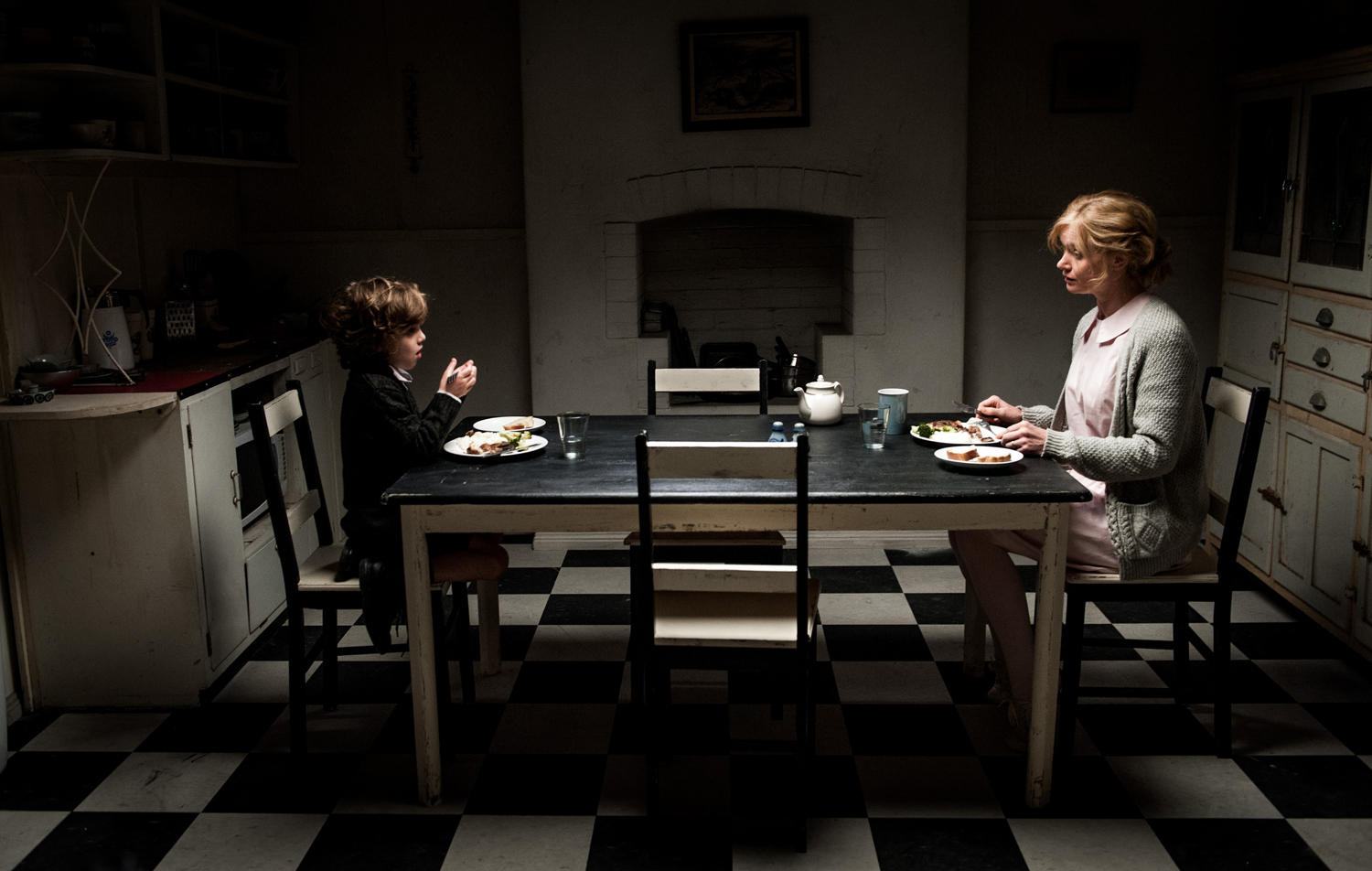
The Babadook comes at a time when people are anxious about the state of the horror genre (when are they not?) and even more unsure about the future of the Australian film industry (when are they not doing that either?). The relatively successful response to Jennifer Kent’s The Babadook places a lot of weight on its shoulders, being the designated crossover horror success of the year and probably being one of the most internationally successful Australian films as well. Sadly, this may end up undoing what is a very modest little exercise in psychological horror. The Babadook doesn’t do anything ‘new’ with the genre, nor does it attempt to be a particularly Australian genre exercise.1 Yet for all its modest ambition, The Babadook is both viscerally frightening and psychologically unnerving, a serious horror flick that never think it’s too good to drop a tried and tested haunted house trope.
Like the most respected horror crossovers (The Shining, The Exorcist, Poltergeist), The Babadook grounds its narrative in the family, in this case a severed one. Since the death of her husband in a car crash while she was in labor, Amelia (Essie Davis) has been forced to care for her clingy and perpetually isolated son Samuel (Noah Wieseman), whose birthday coincides with his unknown father’s death. Samuel’s penchant for magic and misguided desire to protect his mother from monsters inspires him to constantly build crude, but very dangerous weapons that cause property damage and get him expelled from school (yeah, I wonder if Chekhov’s arsenal will make an appearance later on?). Now homebound, the disobedient Samuel isolates his mother from her friends, loses her job and slowly drives her into a sleep-deprived state of mental anguish. Before things start going bump in the night (and that’s not lazy writing, things literally do), the film has already settled on a pretty horrific premise: what if the bane of your existence is your child?
One of the key strengths of The Babadook is to fill the extended set up with as much dread as possible well before the supernatural makes its debut. In a time where lazy horror films drag us through unimaginatively laboured exposition, like the overcooked side of vegetables you have to eat with your steak, it’s refreshing to see a film undermine its characters’ and its audience’s sense of bearing in the usually designated ‘down-time’ between (or before) scares. Immaculate sound design and some very strange supporting performances paint a hostile world that has no room for Amelia or the misfit Samuel. Scenes with school counsellors and child services are executed with an oddball sense of comedy and surrealism that draw attention to the natural horror of Amelia’s position.
However this is all just the set up for the real star of the film, the titular Mr Babadook, whose summoning book (like if Maurice Sendak wrote the Evil Dead’s Necromancer) appears, like the best horror movie instigators, completely out of nowhere on Samuel’s shelf. I probably don’t need to say that reading it unleashes Mr Babadook from the confines of his immaculately constructed pop-up book to cruelly terrorize the already traumatized broken family who were unfortunate enough have it appear on their shelf in the first place. After the immaculately executed set up, the scares are greeted warmly but unfortunately the films attempts at outright horror are slightly uneven.
As I said, there’s very little new ground being covered in terms of horror techniques and there’s nothing wrong with that per se. It’s amazing what Kent manages to squeeze out of some of the most worn horror tropes in the book (in this case the literal book). But for every jump scare, creepy whisper or psychotic rant that successfully unnerves, there’s one that falls a bit flat and a horror beat that doesn’t work doesn’t just fail to add to a film – it actively detracts from the engagement. When The Babadook works it is utterly terrifying, there are a few scenes that play on Amelia’s late night TV watching that rank with some of the finest horror moments I’ve seen. But sadly the film’s climax, which relies heavily on Davis and Weiseman to work, isn’t quite as terrifying as it should be. When Davis is subtly cracking under the pressure of Samuel’s neediness she is impeccable, but when called upon to abandon all nuance and just go for it she falls a bit flat and the film goes with it. The oft-impersonated madness of Jack Nicholson’s The Shining shtick is often mocked for its scenery-chewing psychosis but The Babadook’s failures make a strong case for the virtues of having a truly unhinged actor at a horror movie’s disposal. Similarly, Weiseman’s slightly stiff performance works wonders when he’s the disturbed burden of his mother, but when he’s called upon to be truly terrified it’s a bit harder to buy into.
Ultimately the monster of The Babadook is a lumbering metaphor and your enjoyment of this film (and especially its ending) will rest on whether you find the dark manifestations of Amelia’s psych transcendently scary or heavy-handed. I lay somewhere in the middle here but I can’t deny the craftsmanship on display. When The Babadook is firing on all cylinders, though, it is peerlessly effective horror and even at its weakest moments, this is clearly a film made by people who care about every frame – and in horror that can be a hard thing to come by.
Around the Staff:
| Dominic Barlow | |
| Felix Hubble | |
| Conor Bateman |
